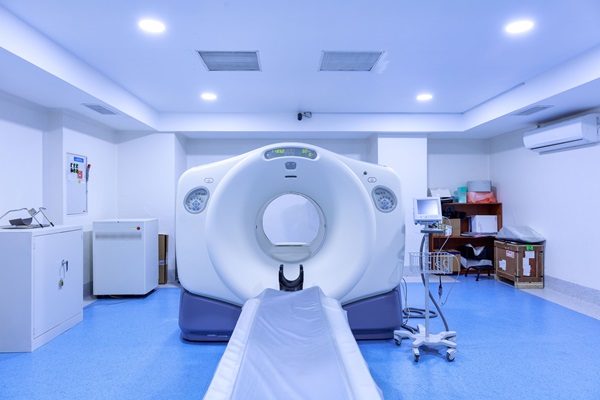Common Uses of Ultrasounds

Ultrasounds, otherwise called sonography, are a crucial tool in modern medicine, going beyond its familiar use in obstetrics to offering actionable insights across the healthcare spectrum. This advanced technology uses sound waves to show what is inside the body, giving a window into what is unseen. Ultrasounds have different uses in therapy, diagnosis, and management, which range from cardiology to urgent care.
The applications of ultrasounds
Ultrasound is a highly effective diagnostic tool in medicine that uses sound waves to take photographs of the internal structures of the body. It indicates the advancements in healthcare technology, which the World Health Organization says helps improve overall health outcomes. Ultrasounds provide a non-invasive real-time view of the entire body for diagnosis, leading procedures, and checking health issues without ionizing radiation risks. With this tool, healthcare professionals can get information about bodily functions without performing surgery.
The following are some of the common uses of ultrasounds in healthcare:
Cardiology (Echocardiography)
Echocardiography is a special ultrasound necessary in cardiology to visualize the performance and anatomical structure of the heart. It measures cardiac output, examines heart valve functions, and detects abnormalities, including congenital heart defects, cardiomyopathies, and pericardial effusions. Echocardiograms provide real-time powerful pictures of the heart working and allow accurate measurement of cardiac chambers, wall thickness, and pumping efficiency. These details allow cardiologists to identify cardiovascular diseases and prescribe treatments accordingly.
Obstetrics and gynecology
Ultrasound in obstetrics is utilized to check fetal growth, identify congenital anomalies, assess the placenta, and determine gestational age. In gynecology, ultrasound can diagnose reproductive organ issues including uterine fibroids, polycystic ovarian syndrome (PCOS), and ovarian cysts. It helps with fertility assessments and guides procedures such as egg retrieval in assisted reproductive technologies.
Urology
Urological applications of ultrasound include the evaluation of kidney size and structure, finding obstructions such as kidney stones, and the detection of cysts or tumors. Bladder ultrasounds measure recurring urine volume post-void and aid in the diagnosis of urinary bladder and retention dysfunctions. Prostate ultrasounds, often performed transrectally, are essential to guide prostate enlargement and biopsies for prostate cancer diagnosis.
Musculoskeletal imaging
Musculoskeletal (MSK) ultrasounds can generally provide a view of all joints, ligaments, muscles, and tendons. It can also determine conditions like rotator cuff tears, osteoarthritis, and tendonitis. It is valued for its ability to take pictures, which can be used in real-time to examine joint disorders and to guide treatment processes such as steroid injections or perhaps fluid aspirations.
Physical therapy
Therapeutic ultrasound in physical therapy uses sound waves to provide deep heat to soft tissues, increasing blood circulation, reducing inflammation, and promoting healing. It is usually used to treat musculoskeletal problems including tendinopathies, strains, and sprains. It also helps with tissue repair and pain relief.
In surgery
High-Intensity Focused Ultrasound (HIFU) is a cutting-edge healthcare technology that utilizes focused ultrasound waves to excise damaged tissue without incisions. HIFU treats conditions like benign tumors (including uterine fibroids) and malignant tumors in the liver, kidney, and prostate. Its non-invasive nature decreases infection risk and shortens recovery time.
Ultrasounds in emergency medicine
Point-of-care ultrasound (POCUS) has become a game changer in emergency medicine for rapid, bedside assessment of individuals. It is used to evaluate abdominal discomfort, determine free fluid in trauma patients, and evaluate cardiac function in case of shock or chest pain. It can also guide emergency procedures such as main venous catheter placement. POCUS improves diagnostic accuracy and speed of decision-making in critical care settings.
Pediatric medicine
Pediatric ultrasound is utilized for kids and babies and identifies conditions like intracranial abnormalities, pyloric stenosis, and hip dysplasia. Its non-invasive nature makes it ideal for pediatric patients and prevents the soreness and radiation exposure of some other imaging modalities.
Oncology
Ultrasound is used to detect and characterize tumors, guide biopsies, and monitor treatment responses in oncology. It is used as part of breast, thyroid, liver, and pancreatic cancer therapy as a real-time, economical, and available imaging choice.
Additional considerations
Developments in ultrasound technology include 4D and 3d imaging, Doppler ultrasound, and elastography. These innovations provide much more detailed anatomical and functional info, thus making both diagnoses and treatments more accurate.
Final thoughts
The versatility and safety of ultrasound imaging have established it as a core element of therapeutic and diagnostic medicine. Its applications range from medical training to basic bedside assessments in the emergency room. Ultrasounds may serve as an educational resource for medical professionals and patients to offer a clear comprehension of medical conditions and treatments. It also serves as a preventive component in general health monitoring to detect and manage problems early before they become serious.
Get more information here: https://tx-urgentcare.com or call Texas Urgent Care & Imaging Center at (832) 941-1894
Check out what others are saying about our services on Yelp: Ultrasounds in New Caney, TX.
Recent Posts
X-rays are popular tools medical professionals use to diagnose a wide range of health conditions quickly and safely. They allow these professionals to see inside the body without invasive procedures, making them invaluable in urgent and primary care settings. Whether identifying fractures, monitoring chronic conditions, or detecting abnormalities, X-rays are critical in ensuring timely and…
A CT scan, or computed tomography scan, is a diagnostic tool that provides detailed images of the body’s internal structures. This non-invasive procedure helps medical professionals diagnose and monitor various conditions, from injuries to chronic illnesses. Knowing what to expect during a CT scan can ease concerns and prepare patients for a smooth experience.A CT…
If you work in public transportation, you may need to have a DOT drug screening. The Department of Transportation (DOT) regulates this test and requires it for you. You might be wondering what this test is like. Keep reading to learn more.Congress passed the Omnibus Transportation Employee Testing Act in 1991. Congress knew that the…
Walk-in clinic provide convenient, accessible health care for non-emergency medical needs, making it an ideal choice when immediate attention is necessary. Understanding when to visit a clinic can help patients save time, avoid unnecessary trips to the emergency room, and receive quality care for their health concerns. These clinics handle various issues, offering fast, professional…


